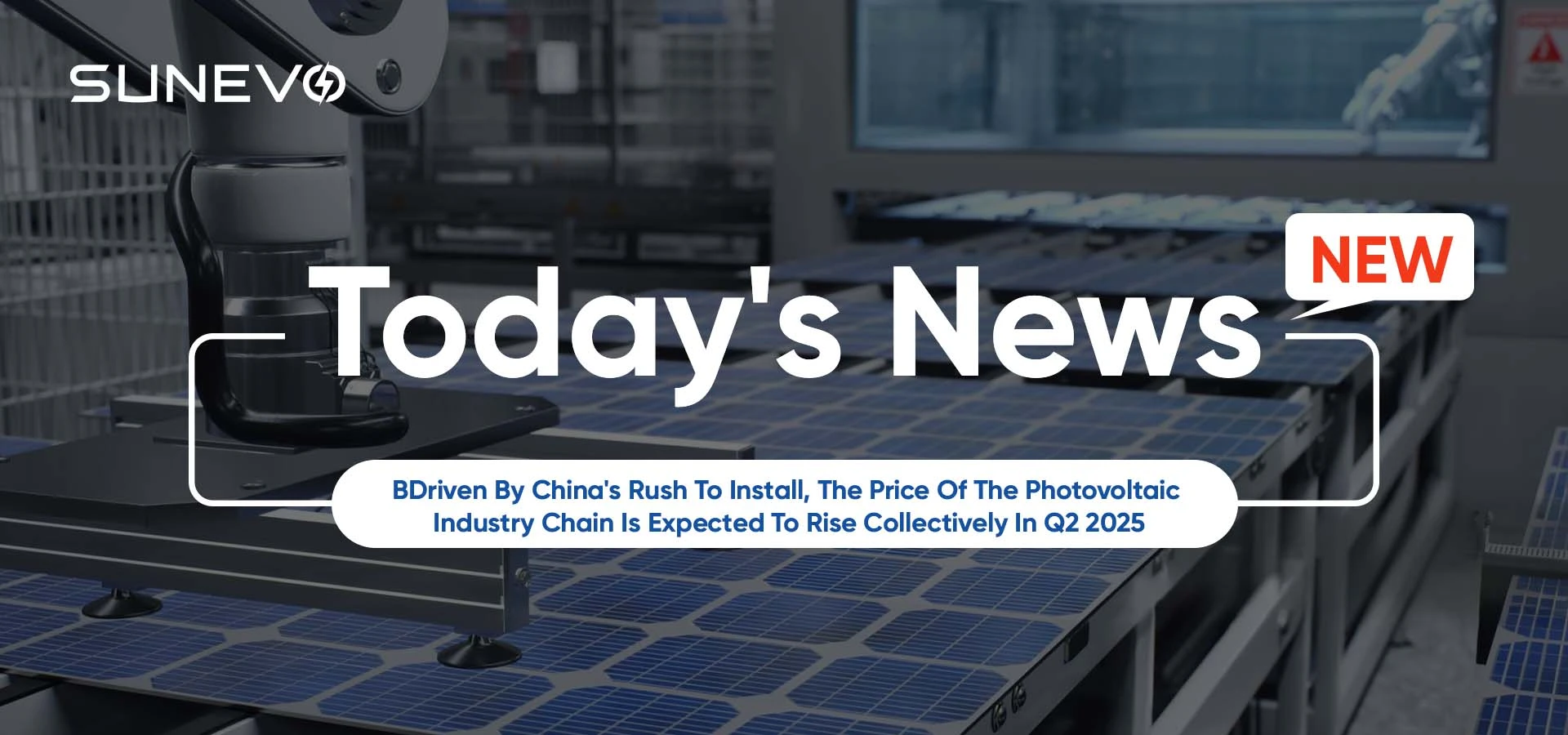
According to the latest survey, China's policies stimulate the overall demand for the photovoltaic industry, and the supply of components is tense. Demand is expected to peak in March and April 2025, which may drive the price of the industry chain to rise in the second quarter.
China announced regulations on photovoltaic power generation and new energy electricity prices in late January and early February 2025. Suppose photovoltaic power generation projects are connected to the grid after May 31. In that case, they will no longer enjoy a fixed purchase price. Still, they will return to the market supply and demand to determine the price, thus triggering a "rush to install." Distributed photovoltaic projects will reach the peak of installation in the second quarter.
The photovoltaic industry maintains self-discipline, and at the same time, stimulated by China's "531 New Policy", downstream demand has rebounded rapidly. In recent months, polysilicon manufacturers have maintained low utilization rates, and there is no sign of production increase in the short term. It is expected that the momentum of silicon material price increases will continue into the second quarter, and the industry generally expects it to reach RMB 45/kg. However, the downstream installation demand will obviously converge in the third quarter, and since electricity costs account for about 30% of the raw material manufacturing production costs, when electricity costs fall during the flood season, material suppliers will most likely increase the utilization rate of production lines to obtain the reduction in electricity costs, but this will also lead to overcapacity and impact prices.
Consulting said that China's distributed project rush to install, coupled with the gradual recovery of demand in other regional markets, the overall silicon wafer demand in the second quarter remained optimistic. Against the backdrop of the price increase of leading enterprises and the self-discipline of industry production, silicon wafer prices are expected to continue to grow, especially the 210R-N type (N-type G12R monocrystalline silicon wafer), which has a large increase, and the price in April is expected to increase by more than 3.5% month-on-month. The supply and demand pattern of silicon wafers in the second quarter was generally stable, but the peak of installation in the third quarter has passed, and demand is expected to decline. Silicon wafer prices may decline, and the actual price still depends on the overall output.
In terms of batteries, since the downstream components have successfully increased in price, the price of battery cells has a trend of rising. In addition, the current battery cell inventory level is healthy, and the increase in production is mostly concentrated in leading enterprises, which is enough to support prices. It is expected that the price of M10L TOPCon and G12 TOPCon will increase by nearly 1.7% in April, and the price of G12R TOPCon will increase by 6.67% in April. From the perspective of downstream price transmission speed, battery prices will be affected by component prices first, and its upward trend may change in May. It is expected that battery prices will continue to decline in the third quarter due to internal circulation.
The consulting pointed out that the rush to install distributed projects has greatly driven the demand for components, causing distributors to stock up a large number of goods. The leading component suppliers have raised prices for many times in a row. The current high price has reached 0.73 yuan/watt, and the average price is 0.7 yuan/watt. The price continues to be supported. The market demand in other regions is stable, while traders in some countries such as Pakistan have increased their purchase volume due to concerns about the impact of the rush to install in the Chinese market.
Analyzing the supply and demand of components, with the end of the rush to install distributed projects at the end of the second quarter, demand may decline. It is expected that in the third quarter, due to fierce market competition, component prices will return to the level of 0.7 yuan/watt.